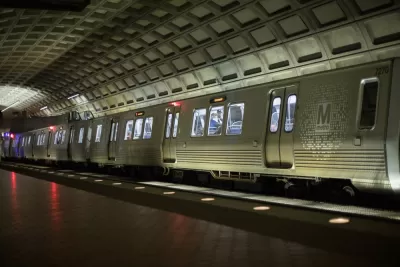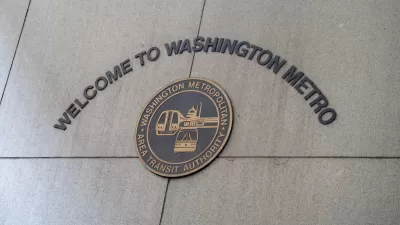Trains will arrive at shorter intervals during rush hours on the line’s busiest days.

Commuters in the Washington, D.C. area will see shorter headways on the well-used Red Line train. As Abigail Constantino reports for WTOP, “Trains will operate every eight minutes all day Tuesdays, Wednesdays and Thursdays, which have become Metro’s highest ridership days, the transit agency said in a news release.” Red Line trains will continue to operate every eight minutes at rush hour and every 10 minutes the rest of the day on Mondays and Fridays.
Like other transit agencies, Metro has been dealing with an operator shortage, problems with its 7000-series trains, which put many of them out of service, as well as a dispute over operator training. Last January, the Metrorail Safety Commission “discovered that Metro was ‘deliberately ignoring’ its own training standards, allowing operators to skip a required eight hours of initial hands-on training overseen by instructors on out-of-service trains.” Metro was later able to make an agreement with the commission that prevented it from having to reduce service by providing operators with the required additional training.
As a TransitCenter blog post recently outlined, the District’s transit recovery after the disruptions brought on by the Covid-19 pandemic has been halting, with ridership remaining below pre-pandemic levels and service reaching fewer jobs in the region than before.
FULL STORY: Red Line service increasing on Metro’s busiest days of the week

Planetizen Federal Action Tracker
A weekly monitor of how Trump’s orders and actions are impacting planners and planning in America.

Maui's Vacation Rental Debate Turns Ugly
Verbal attacks, misinformation campaigns and fistfights plague a high-stakes debate to convert thousands of vacation rentals into long-term housing.

Restaurant Patios Were a Pandemic Win — Why Were They so Hard to Keep?
Social distancing requirements and changes in travel patterns prompted cities to pilot new uses for street and sidewalk space. Then it got complicated.

In California Battle of Housing vs. Environment, Housing Just Won
A new state law significantly limits the power of CEQA, an environmental review law that served as a powerful tool for blocking new development.

Boulder Eliminates Parking Minimums Citywide
Officials estimate the cost of building a single underground parking space at up to $100,000.

Orange County, Florida Adopts Largest US “Sprawl Repair” Code
The ‘Orange Code’ seeks to rectify decades of sprawl-inducing, car-oriented development.
Urban Design for Planners 1: Software Tools
This six-course series explores essential urban design concepts using open source software and equips planners with the tools they need to participate fully in the urban design process.
Planning for Universal Design
Learn the tools for implementing Universal Design in planning regulations.
Heyer Gruel & Associates PA
JM Goldson LLC
Custer County Colorado
City of Camden Redevelopment Agency
City of Astoria
Transportation Research & Education Center (TREC) at Portland State University
Jefferson Parish Government
Camden Redevelopment Agency
City of Claremont





























